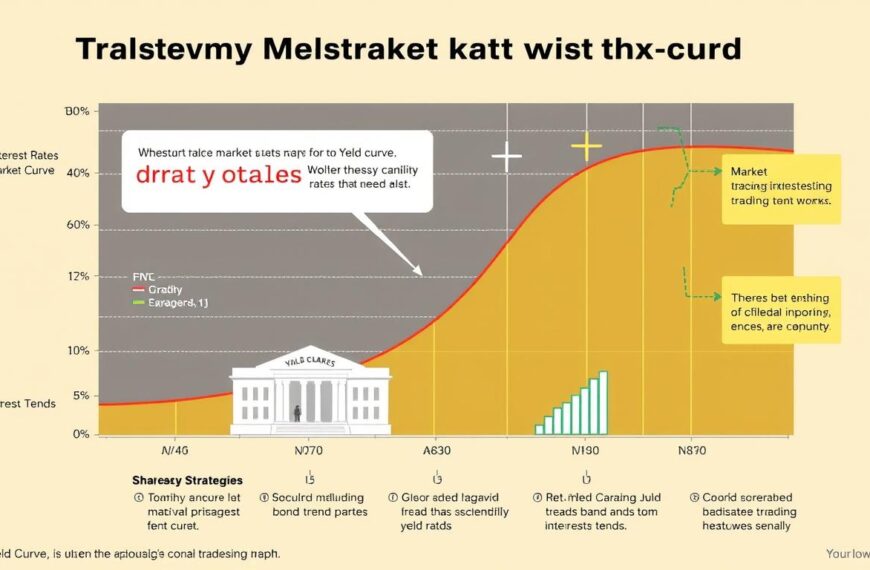As we look forward to 5G becoming widespread, 6G is already on the rise. This new wireless tech will change how we connect, offering speeds and capacity we can’t imagine. It will reach speeds of up to 1 Terabyte per second, far beyond 5G’s 1-10 Gigabits per second.
At the core of 6G are new technologies like the terahertz spectrum, artificial intelligence, and quantum tech. It aims for latency under 1 millisecond, making it perfect for billions of devices per square kilometer. This will bring us closer to holographic communications and extended reality, changing how we interact with digital worlds.
Key Takeaways
- 6G technology promises peak download speeds of up to 1 Tbps, far surpassing the capabilities of 5G’s 1-10 Gbps
- Latency in 6G networks will be reduced to less than 1 millisecond, enabling real-time applications and intelligent automation
- 6G will leverage the terahertz (THz) spectrum and integrate artificial intelligence for network management and optimization
- Immersive technologies like holographic communications and extended reality (XR) will be enabled by the transformative advancements of 6G
- 6G development is expected to support the evolution of the metaverse, virtual environments, and other cutting-edge applications by 2030
The Evolution from 1G to 5G: Setting the Stage
The journey of mobile technology has been amazing. Each new generation of wireless networks has brought big improvements in how we connect. From the early days of 1G, which only allowed basic voice calls, to today’s 5G networks that can reach speeds of up to 10 Gbps, the change is huge.
The Journey Through Mobile Generations
Let’s look at how mobile networks have evolved:
- 1G: Introduced in 1979, 1G networks used analog signals. They had poor sound quality and limited security.
- 2G: Launched in the 1990s, 2G networks brought digital communication. They improved voice quality and allowed text messages, with speeds from 9.6 kbps to 64 kbps.
- 3G: Introduced in the early 2000s, 3G networks supported fast data transmission. They could handle speeds up to 2 Mbps, enabling web browsing and video calls.
- 4G: Deployed in the late 2000s, 4G networks used LTE technology. They offered faster speeds, up to 100 Mbps or more, for streaming and app use.
- 5G: Launched in 2019, 5G networks have increased bandwidth and speeds. They can reach up to 10 Gbps, enabling advanced technologies like autonomous vehicles.
Current Limitations of 5G Networks
5G has changed mobile connectivity a lot, but it still has some limits. The demand for new technologies like intelligent surfaces, distributed AI, and network slicing is growing fast. This is why we’re moving to 6G, the next wireless technology.
The Need for Next-Generation Connectivity
As we rely more on advanced technologies, we need faster, more reliable, and widespread connectivity. 6G aims to solve 5G’s limitations by offering even faster data rates and lower latency. It will support the digital world’s constant evolution with intelligent surfaces, distributed AI, and network slicing.
Understanding 6G Wireless Technology Advancements
As we move past 5G, 6G wireless technology is set to change how we connect and experience the digital world. 6G networks will offer a peak data rate of 1 terabyte per second. This is much faster than 5G and will allow for seamless integration of digital, physical, and human realms.
This ultra-high bandwidth will open doors for new applications in smart cities, autonomous vehicles, and virtual reality. It’s a game-changer for many industries.
6G technology is set to launch in 2030, with research starting in 2020. Companies like Keysight Technologies, Huawei, Nokia, and Samsung are leading the charge. They’re working with research institutions like the 6Genesis project in Finland and South Korea’s Electronics and Telecommunications Research Institute.
6G will bring big changes in many areas. Integrated sensing will improve threat detection and health monitoring. Holographic beamforming will make immersive XR experiences possible. And ultra-high bandwidth will enable more advanced mobile devices and systems.
This will transform industries like smart manufacturing and transportation. It’s a huge leap forward.
| Key 6G Advancements | Potential Applications |
|---|---|
| Integrated Sensing | Threat Detection, Health Monitoring |
| Holographic Beamforming | Immersive Extended Reality (XR) |
| Ultra-High Bandwidth | Smart Manufacturing, Transportation Systems |
As 6G development advances, researchers and industry leaders face challenges. They’re working on signal propagation, security, and environmental impact. 6G technology has the potential to revolutionize communication and connectivity.
It promises to usher in a new era of digital transformation. It will enhance our everyday experiences.
“6G networks are projected to provide a peak data rate of 1 terabyte per second for wireless data, transmitted in short bursts across limited distances, surpassing the capabilities of 5G.”
Breaking Speed Barriers: From Gigabits to Terabits
The world is excited for the next big thing in networks: 6G technology. It promises to break through the speed limits we’ve known for years. 6G aims to reach speeds of up to 1 terabyte per second, far beyond what 5G can do.
Exploring Terahertz Communications
The secret to these fast speeds is the Terahertz (THz) spectrum. 6G will use frequencies around 95 kilobits to deliver ultra-fast speeds. This will open up a new world of data-intensive applications, changing how we use the internet.
Network Capacity and Coverage Improvements
6G networks will also have more capacity and better coverage. They will use denser radio networks with more antennas. This means better service, especially indoors, for a seamless experience.
Ultra-Low Latency Capabilities
Latency, or how fast data is processed, will also get a big boost. 6G aims for latency of less than one microsecond. This will make real-time apps like self-driving cars and remote surgery possible.
As we wait for 6G to arrive by 2030, the future of the internet is looking bright. It will bring us speeds, capacity, and response times we’ve never seen before, changing our digital world forever.
“6G sets its sights on achieving transmission rates of up to 1 terabyte per second (Tbps), leveraging the Terahertz (THz) spectrum.”
| Key 6G Advancements | Capabilities |
|---|---|
| Transmission Rates | Up to 1 Terabyte per Second (Tbps) |
| Spectrum Utilization | Terahertz (THz) Frequencies |
| Latency | Less than 1 Microsecond |
| Network Coverage | Improved Indoor and Outdoor |
Artificial Intelligence Integration in 6G Networks
Artificial Intelligence (AI) will be key in 6G technology. It will help manage networks, allocate resources, and fix problems on its own. 6G networks will be smart and fast, making the fourth industrial revolution better.
AI will change how networks work, making them better for users. Distributed AI will make networks work better, saving energy and improving performance. Network slicing will add AI to make networks even better.
AI and 6G will bring us closer to a better digital world. We’ll see smarter cities, better healthcare, and more advanced technology. Intelligent surfaces will make cars and drones smarter by processing lots of data fast.
“The combination of AI and 6G technology will significantly advance Virtual and Augmented Reality (VR and AR) experiences, making them more immersive and interactive.”
Working together, we can make AI-empowered 6G networks a reality. 6G testbeds help researchers and developers test new tech. This speeds up the move from ideas to real-world use.
Revolutionary Applications of 6G Technology
6G technology is on the horizon, bringing with it a new wave of applications. It will change how we connect and interact with the world. Thanks to terahertz communications, ultra-high bandwidth, and integrated sensing, we’re entering a new era of connectivity.
Enhanced Mobile Broadband Experience
6G will take mobile broadband to new levels. Imagine streaming 8K or 16K videos without lag, or having seamless virtual reality experiences. With speeds up to 1 Tbps, 6G will make accessing high-quality content on the go instant.
Holographic Communications
Holographic communication is a key feature of 6G. It will change how we talk and share information remotely. Imagine having 3D-like conversations and collaborative sessions, making remote work feel more real.
Immersive Extended Reality (XR)
6G will also bring us closer to immersive Extended Reality (XR). This includes virtual, augmented, and mixed reality. With 6G, digital and physical worlds will blend seamlessly. This will change gaming, education, and more.
6G’s impact goes beyond these examples. It will also change autonomous vehicles, smart cities, healthcare, and IoT. As we look forward to 6G, the future of connectivity and digital transformation is exciting.
The Role of Intelligent Surfaces and Network Architecture
As we approach the dawn of 6G technology, intelligent surfaces and advanced network architectures are key. These surfaces can reflect electromagnetic signals, changing 6G networks. They promise low latency and fast speeds, especially in hard-to-reach areas.
6G will use virtualized networks and edge computing for faster data processing. It will also have a vast sensor network. This network will gather data from the ground and air for tasks like 4D mapping and monitoring the environment. The mix of holographic beamforming, next-generation networks, and distributed AI will drive the 6G revolution.
“6G satellite technology, combined with intelligent surfaces capable of reflecting electromagnetic signals, can deliver low latency and multi-gigabit connectivity.”
The global mobile traffic is expected to skyrocket, hitting over 5000 exabytes per month by 2030. To handle this, 6G networks will use cutting-edge tech. This includes:
- Terahertz communications for unmatched speed and bandwidth
- Integrated sensing and communication (ISAC) for precise tracking
- Integrated AI and communication for smarter apps and interactions
- Ubiquitous connectivity for a smooth user experience everywhere
By adopting these innovations, 6G will change how we connect. It will merge our physical and digital worlds. This will lead to big leaps in healthcare, smart manufacturing, and transportation.
Energy Efficiency and Sustainable Networking
As we look beyond 5G, 6G technology is set to change how we connect. It focuses on being energy-efficient and sustainable. This means making systems that use less power, so we can use more IoT devices. It’s all about making things more affordable and better for the planet.
Green Technology Integration
6G networks will use green tech to lessen the environmental impact of wireless. They’ll run on solar and wind power. Also, new algorithms like machine learning will help manage energy and resources better.
Power Consumption Optimization
Dealing with the energy needs of next-generation networks is a big challenge. 6G aims to solve this with new energy-efficient networking methods. These include smart power management and integrated sensing to watch and improve energy use.
The shift to 6G is a chance to make sustainable networks that help reach net-zero emissions by 2050. This shows how crucial energy-efficient networking is for wireless future.
“The demand for generative artificial intelligence (AI) is driving data growth, necessitating the construction of a new data center every three days. The transition from 5G to 6G aims to create purpose-driven sustainable networks that contribute to achieving net-zero emissions by 2050.”
By focusing on energy efficiency and sustainability, 6G will change how we deploy networks. It will also help the planet by reducing the environmental impact of wireless. This approach will lead to a greener future in the 6G era.
Security and Privacy in the 6G Era
The world is waiting for 6G technology, and security and privacy are more important than ever. 6G networks will be very connected, which raises big questions about keeping data safe and protecting user privacy. With network slicing, distributed AI, and intelligent surfaces, keeping information safe will be a big challenge.
6G will use advanced radio frequency sensing to find device locations. This helps keep the network secure and stops unauthorized access. AI will also make the network run better by optimizing how data is sent and received.
Autonomous 6G networks with AI will manage resources like network slices and energy. This smart management ensures data is delivered quickly and reliably. It’s crucial for applications like self-driving cars, where fast data delivery is key.
6G will also use mobile data analytics to understand user behavior. This means services can be tailored to each user, making the network more efficient. This personal touch, combined with better security, will make users trust the technology more.
“6G use cases impose stricter security requirements than 5G use cases. Data processing, threat detection, traffic analysis, and data encryption are considered critical issues in 6G networks.”
As 6G technology grows, security and privacy must be top priorities. The industry needs to focus on strong cybersecurity, ethical data handling, and AI-powered security. This will help create a future where we can trust our digital connections.
| Security Aspect | 6G Advancements |
|---|---|
| Radio Frequency Sensing | Detect device locations to enhance security options |
| AI-powered Optimization | Optimize transmitters, channels, and receivers for improved end-to-end data delivery |
| Autonomous Resource Management | Manage network slices, computing power, and energy based on demand |
| Mobile Data Analytics | Predict user behavior for personalized services and efficient resource allocation |
Industry Impact and Digital Transformation
6G technology is changing how we interact with the world. It will transform healthcare, making medicine more precise and surgeries remote. It will also monitor patients with tiny nodes that check vital signs.
Terahertz communications and holographic beamforming will help doctors give better care. This means patients will get more personalized and efficient treatment.
In smart manufacturing, 6G will change the game. It will analyze data in real-time and make factories more efficient. Robots and humans will work better together, thanks to 6G.
Manufacturers will use 6G to cut costs and meet market demands quickly. This will make factories more productive and efficient.
- Precision medicine and remote surgery enabled by 6G’s advanced capabilities
- AI-powered automation and human-robot collaboration in smart manufacturing
- Optimized traffic flow and autonomous driving in transportation systems
6G will also change transportation. It will connect electric vehicles and make driving safer and more efficient. Terahertz communications and holographic beamforming will make travel greener and smoother.
6G will also impact education, agriculture, and energy. It will make learning, farming, and energy use more efficient and sustainable. As 6G arrives, we’ll see a new wave of innovation and change in how we live and work.
“6G will integrate physical, digital, and human elements, enabling real-time interactions that could revolutionize healthcare, smart cities, and the Internet of Everything.”
Global Connectivity and Digital Inclusion
The world is excited for 6G technology, which promises universal wireless communications access. 6G aims to close the digital divide by offering ultra-high bandwidth and low-latency connectivity. It will reach even the most remote and underserved areas using advanced satellite technology and intelligent surfaces.
6G could connect our physical and digital worlds, leading to more IoT adoption and a comprehensive metaverse. Open RAN advancements will also lower network costs. This will make it easier to provide services to more people worldwide.
Researchers and industry leaders are working together to shape 6G. They focus on energy-efficient networking and sustainable practices. This way, 6G networks can be both universal and environmentally friendly. The goal is to make sure everyone can benefit from next-generation networks, no matter where they are or their economic status.







